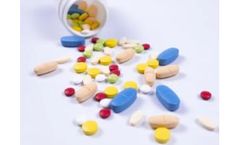Oral Solid Articles & Analysis
5 articles found
This coating material not only makes the product easier to identify, but even improves the pharmacokinetic properties of the drug by altering its release: ensuring that the drug reaches its target and provides sufficient concentrations in the body to be maintained for an extended period of time. Coatings are widely used in oral solid dosage forms, including ...
In some cases where relevant research data are not sufficient, a compatibility study should be conducted. For example, for oral solid preparations, several kinds of excipients can be selected. ...
For lack of relevant research data, compatibility studies can be conducted. For example, for solid oral preparations, several kinds of excipients can be selected at first, and then mix the main drug and excipients with a certain proportion, and put them under strong light (4500±500Lux), high temperature (60℃) and high humidity (90±5 %) conditions ...
Classified by function and purpose, pharmaceutical excipients can be used in different drug forms, including: Injection, where pharmaceutical excipients are antioxidants, cosolvents, and isotonic regulators, etc. Oral solid preparations, where pharmaceutical excipients are lubricants, fillers, and adhesives and diluents, etc. Oral liquid ...
Excipients are the general term for all materials in the prescription except the main active ingredients, such as binders, disintegrants, lubricants, fillers, etc. The choice of excipients for oral solid preparations is affected by factors such as the pharmacological and chemical properties of the raw materials, the preparation process and the price of ...



